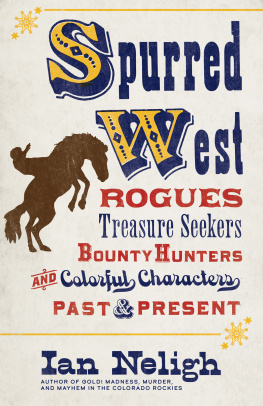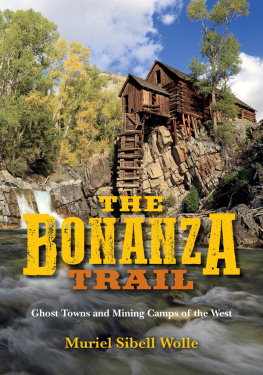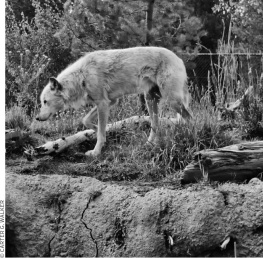To learn more about the author and his work, visit www.mikecoxauthor.com.
William Talcott was gathering firewood (others say looking for a lost horse) when he noted a promising ledge of quartz in central Nevadas Pony Canyon, not far from a stagecoach stop called Jacobs Station. He collected samples for analysis and sent the rocks to Virginia City. The assayers report showed the ore was rich in silver. As word spread, miners descended on the canyon, and their tent city grew into the town of Austin.
By 1865 the community had an estimated ten thousand residents, making it Nevadas second-largest city. At the time, that many residents also made Austin, Nevada, twice as large as Austin, Texas, the Lone Star States capital. Some have posited that the Nevada city was named after its doppelganger, but most believe the name honored one of its pioneers.
The boomtown got another boost when it gained a railroad connection in 1880. Rail service loses its significance when a carrier has less and less to ship, which is what happened in the 1890s as the ore began to play out at the same time the value of silver declined. A final economic blow came in 1979 when the Nevada legislature voted to make Battle Mountain the county seat.
A $275,000 Sack of Flour
In 1864 Austin merchant Reuel Gridley lost an election bet. Rather than wagering money on the outcome of the citys mayoral race, Gridley declared that if his candidate lost the election, he would tote a fifty-pound bag of flour the length of the town, more than a mile. When his man got beat, Gridley carried out his obligation. Then he put the flour sack up for auction to benefit the US Sanitary Commission, a Red Crosslike organization.
When word spread that the flour sack realized $8,000 in Austin, other communities asked Gridley to put it on the auction block in their town. In a year of traveling all over the West, Gridley raised $275,000 to benefit wounded or sick Civil War soldiers.
Listed on the National Register of Historic Places in 2003, the old Gridley Store (247 Water St.) still stands. The Wild Wests most famous flour sack survived and is displayed at the Nevada Historical Society Museum in Reno. Reuel Colt Gridley (18291870) moved to California in 1866.
Battle Mountain began as a stop on the transcontinental Central Pacific Railroad in 1869. As for this communitys evocative name, historians have not been able to agree on what if any clash of arms Battle Mountain refers to. The most common story is that a prospector named George Tannihill named the surrounding mining district that preceded the founding of the town in commemoration of a fight that he and nearly two dozen other settlers had in 1857 with American Indians in the vicinity. But if it happened, no one has ever uncovered any details.
Whatever led to its naming, the town got another boost in 1880 when the Nevada Central Railroad completed a line connecting Austin to the transcontinental railroad at Battle Mountain. As a supply and shipping point, the town survived the decline of mining in the area that killed or stunted numerous other communities, including Austin.
Battle Mountain has two museums, the Trail of the 49ers Interpretive Center (453 North 2nd St.; 775-635-5720) and the Battle Mountain Cookhouse Museum (905 Burns St.; 775-635-8548). The museum focuses on local history, not Western culinary arts, but it is housed in a near-century-old cookhouse moved to town from an area ranch.
Founded in 1865 as a mining town following the discovery of silver ore in the Toquima Mountains, within two years Belmont had a population of two thousand. The town got another boost in 1867 when the county seat was moved here from Ione. Over the following two decades, area mines produced some $15 million in silver before the ore began to play out. But Belmont never gained a rail connection, and after its primary economic engine careened off the figurative track, the town declined. In 1905 the county seat was relocated to then-booming Tonopah, forty-five miles to the south.
Charlie and Jack Become Unruly
In 1874, two men named Charlie McIntyre and Jack Walker arrived in Belmont and began to explore the town. In the process, perhaps having overindulged in spiritous beverages, they settled a difficulty with a local resident by shooting him. The man survived, but the newcomers were duly arrested.
Not finding that confinement suited their lifestyle, the pair managed to break out of jail and went on the lam. A couple of days later, they were captured and returned to jail. Details are sketchy, but for whatever reasonmaybe the shooting victim had dieda delegation of concerned citizens decided there was no need to burden the countys legal system with a trial.
Descending on the sheriffs office and basement lockup, the vigilantes overpowered the sheriff and a deputy, tied them up, and removed McIntyre and Walker from their cells. The high desert town lacking any substantial trees, the citizens group figured out a way to hang the men right there in the jail.
Once theyd asphyxiated, the pair were cut down and taken to the Belmont Cemetery on the edge of town (GPS coordinates: N38 35.06', W116 52.69') and buried in an unmarked common grave. The double lynching occurred in the old bank building, the ruins of which are still standing, during the construction of the two-story redbrick courthouse that opened in 1876. The ghost towns most impressive surviving structure, it was maintained by the state for a time but was transferred to Nye County in 2012. A nonprofit group now takes care of the property.
When Frank Hall shot an eagle, then had it mounted and hung over the door of the trading post that he and five others opened in 1851 on the Emigrant Trail, it seemed logical to call the place Eagle Station. The store went through several owners before Abraham Curry and other investors bought it and the entire surrounding valley in 1858. They had a townsite surveyed and named it Carson City for scout Kit Carson. In 1861, when Congress cut Utah Territory in half to create Nevada Territory, Carson City became the capital. With statehood coming three years later, it remained the seat of government.
With many of its nineteenth-century buildings still standing, Carson City is considered one of the best unreconstructed early-day mining towns in Nevada. Among the vintage structures are the 1871 Greek Revival Lander County Courthouse (122 Main St.), the 1866 City Hall (90 South St.), and the St. Charles Hotel (310 South Carson St.; 775-882-1887). Built in 1862, the St. Charles is the oldest continuously operating hotel in Nevada. These buildings are among forty-four National Register of Historic Places or properties in Carson City.
Built in 1863 by Lemuel Sandy Bowers and his wife Alison Eilley Orrum Bowers, the sixteen-room Bowers Mansion is a monument to nineteenth-century nouveau riche extravagance. Having made separate fortunes in silver mining, the couple spent $400,000 building an elegant stone mansion inspired by Mrs. Bowerss memory of fine homes in her native Scotland. The couple traveled to Europe, spending additional hundreds of thousands of dollars collecting furniture and fine art to go inside their new home.





